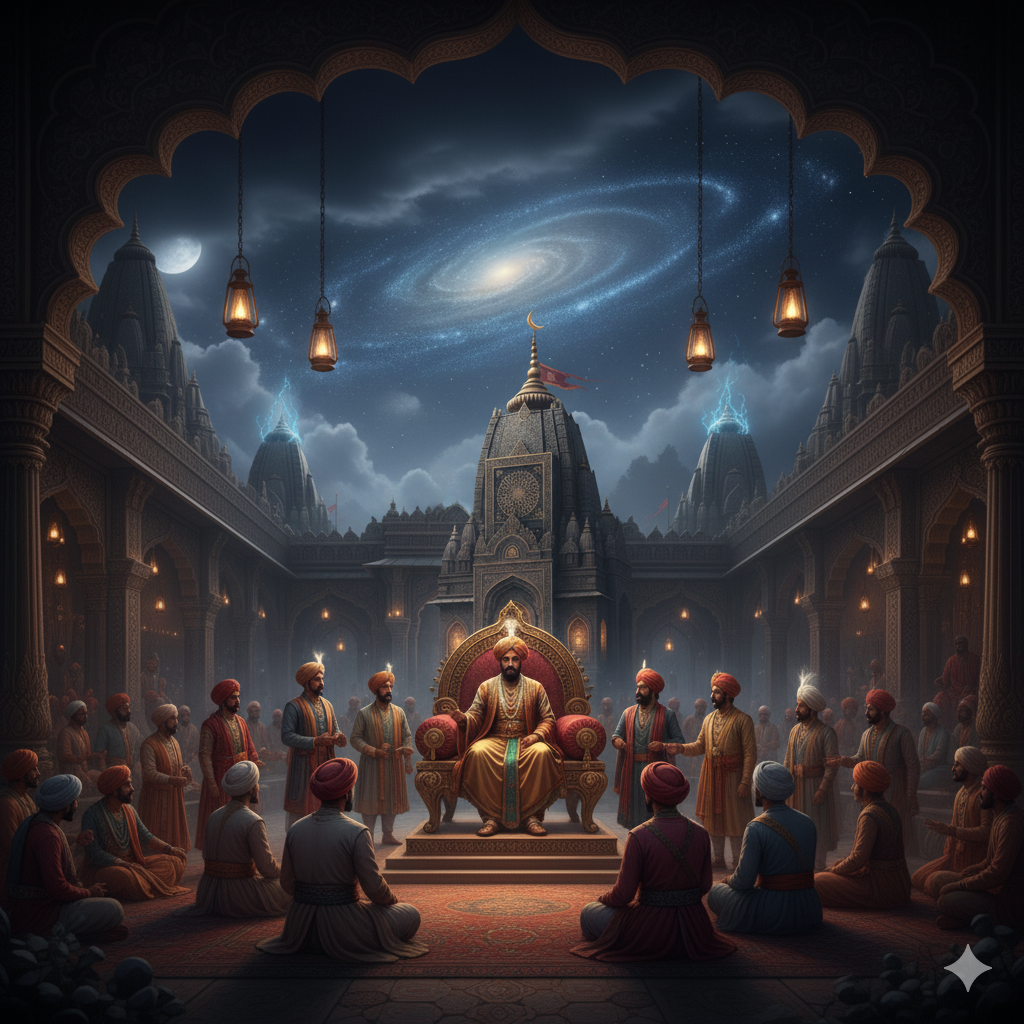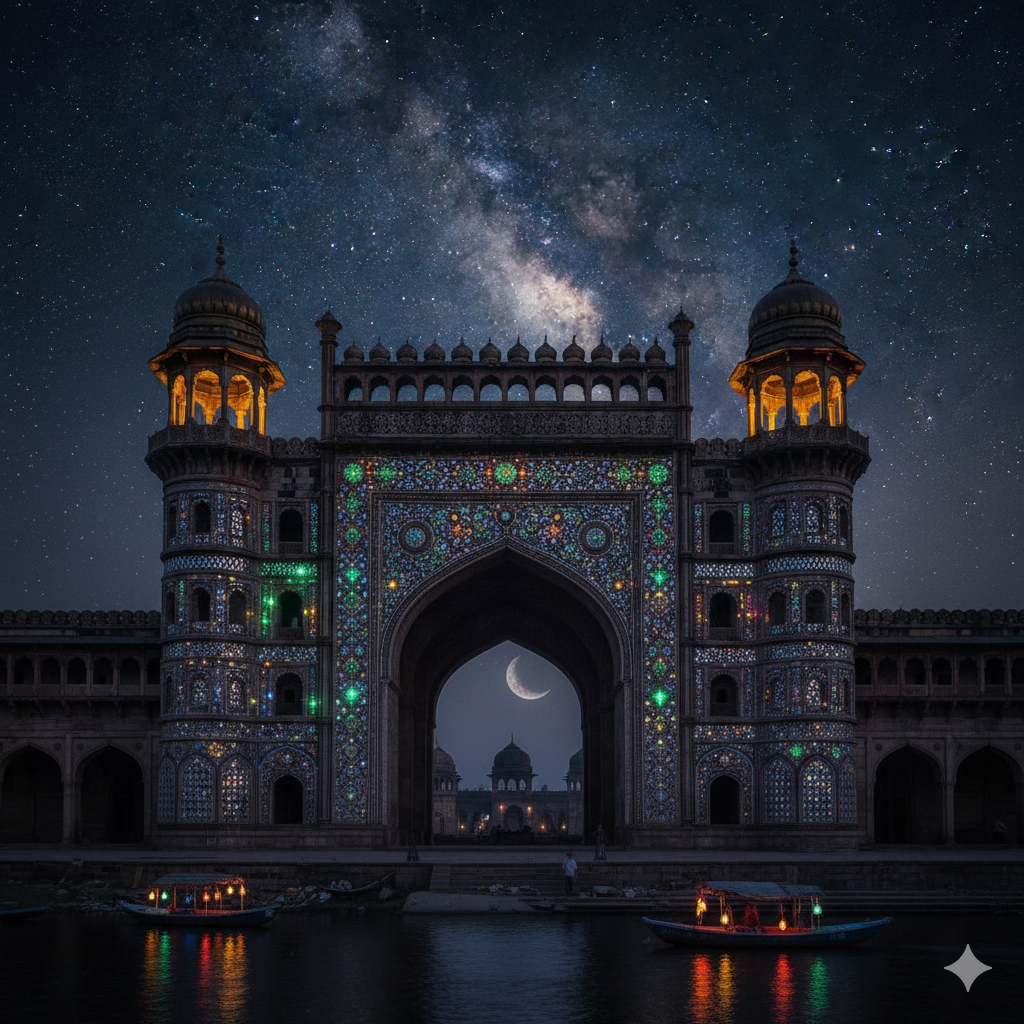Introduction
The decline of the Mughal Empire in the 18th century created a political vacuum in northern India. The once-centralized authority of Delhi weakened under the combined pressures of internal corruption, administrative inefficiency, and external invasions. In this context, several regional powers emerged, asserting autonomy while maintaining nominal allegiance to the Mughal throne. Among these, the Nawabs of Awadh (Oudh) played a pivotal role in shaping the political landscape of eastern Uttar Pradesh and neighboring regions.
Awadh, with its fertile Gangetic plains, strategic location, and rich cultural heritage, became a prominent political, military, and cultural center under the Nawabs. The rulers of Awadh, while initially serving as Mughal governors (subahdars), gradually transformed the province into a quasi-independent kingdom, maneuvering skillfully amidst the decline of Mughal authority, the rise of regional powers, and the increasing influence of European colonial forces.
This article examines the political activities of the Nawabs of Awadh, their strategic governance, administrative policies, military campaigns, and interactions with contemporary powers, highlighting how they shaped the history of northern India in the 18th and early 19th centuries.
Historical Background: Mughal Decline and the Rise of Awadh
The Mughal Empire, once a symbol of centralized authority in India, began to decline after the death of Aurangzeb in 1707. Successive emperors were weak and incapable of asserting control over the distant provinces. This period witnessed:
- Decentralization of power to provincial governors (subahdars).
- Emergence of regional kingdoms like Rohilkhand, Marathas, Bengal, and Awadh.
- Increased autonomy for military commanders, who established hereditary rule in their territories.
In this context, Saadat Ali Khan I (reigned 1722–1739), the first Nawab of Awadh, transformed the province from a Mughal subah into a strong regional polity. He maintained nominal allegiance to the Mughal emperor, but in reality, he exercised independent authority, laying the foundation for the political prominence of Awadh.
Administrative and Political Consolidation under the Nawabs
The Nawabs of Awadh followed a dual strategy of internal consolidation and external diplomacy to strengthen their rule.
1. Administrative Reforms and Governance
- Centralized Administration: The Nawabs centralized revenue collection and administrative control to reduce the influence of local landlords (zamindars).
- Revenue System: They maintained an efficient revenue system, inspired by the Mughal model, ensuring the flow of resources for governance and military upkeep.
- Judicial Reforms: Nawabs established courts and appointed qazis and judges, blending Islamic legal principles with local customs.
- Autonomy in Decision-Making: The Nawabs exercised full authority in administrative appointments, taxation, and law enforcement, even while paying symbolic tribute to Delhi.
This administrative centralization helped Awadh emerge as a stable political entity amidst the fragmentation of northern India.
2. Military Activities and Expansion
The Nawabs were conscious of the political volatility of 18th-century India. They maintained large standing armies, trained along Mughal lines, and incorporated local recruits and foreign mercenaries.
- Territorial Expansion: Under Shuja-ud-Daula (1754–1775), Awadh expanded its influence into Rohilkhand, parts of Bihar, and Bengal. Shuja-ud-Daula skillfully negotiated alliances and conducted military campaigns to protect and extend Awadh’s boundaries.
- Conflicts with Regional Powers: The Nawabs faced military challenges from Marathas, Rohillas, and later the British East India Company, which shaped their strategic and diplomatic choices.
- Fortification and Defense: Nawabs constructed forts, garrison towns, and defensive structures to secure the kingdom against both internal rebellions and external threats.
Military strength was central to maintaining political autonomy while navigating the challenges posed by neighboring powers and emerging colonial forces.
Political Alliances and Diplomacy
The Nawabs of Awadh were skilled diplomats, balancing relationships between the Mughal emperor, Marathas, Rohillas, and the British East India Company. Their diplomacy reflected a pragmatic approach to survival and territorial consolidation.
1. Relations with the Mughal Emperor
- The Nawabs maintained nominal allegiance to the declining Mughal authority in Delhi to legitimize their rule.
- They sent tributes and gifts, participated in ceremonial recognition, and acknowledged the emperor’s spiritual authority while exercising de facto independence.
2. Relations with the Marathas
- Awadh faced significant pressure from the Maratha Confederacy, which sought to expand into northern India.
- Shuja-ud-Daula allied with the Mughal emperor in the Third Battle of Panipat (1761) against the Marathas, playing a crucial role in curbing Maratha expansion in the north.
- This alliance enhanced Awadh’s political stature and demonstrated the Nawabs’ strategic acumen.
3. Relations with the Rohillas
- The Rohillas of Rohilkhand were a constant threat due to territorial disputes.
- Shuja-ud-Daula engaged in both military campaigns and political treaties with the Rohillas, including the infamous Rohilla War (1774), which saw Rohilkhand’s annexation with British support.
4. Engagement with the British East India Company
- The 18th century witnessed the expansion of British influence in India, particularly after the Battle of Plassey (1757) and the consolidation of Bengal.
- Awadh entered into a series of treaties with the Company, including military alliances and trade agreements, effectively making Awadh a buffer state between British territories and other northern powers.
- While this allowed temporary security, it eventually increased British political and military influence over Awadh, setting the stage for eventual annexation in 1856.
Key Nawabs and Their Political Activities
1. Saadat Ali Khan I (1722–1739)
- The founder of the independent Nawabi line in Awadh.
- Strengthened administration, reorganized revenue systems, and built a stable army.
- Maintained political balance between Mughal authority and neighboring states.
2. Safdar Jung (1739–1754)
- Expanded Awadh’s influence and fortified Lucknow as the political and cultural capital.
- Negotiated with Marathas and Rohillas to safeguard territorial integrity.
- Initiated public works, gardens, and fortifications, reflecting both political and cultural patronage.
3. Shuja-ud-Daula (1754–1775)
- One of the most politically active Nawabs, involved in national and regional affairs.
- Allied with Mughal Emperor Alamgir II against Marathas in the Third Battle of Panipat (1761).
- Confronted internal revolts and external threats through strategic alliances with the British and regional powers.
4. Asaf-ud-Daula (1775–1797)
- Continued centralization of administration and enhanced Awadh’s economic and cultural power.
- Negotiated with British authorities to retain autonomy while strengthening Lucknow as a political and cultural hub.
5. Wajid Ali Shah (1847–1856) — Pre-Annexation Period
- Although more known for cultural patronage, he navigated a complex political landscape under increasing British dominance.
- His reign was marked by limited political maneuvering, as British influence curtailed Nawabi authority, leading to eventual annexation in 1856.
Political Strategies of the Nawabs
- Strategic Neutrality and Alliances:
The Nawabs avoided outright confrontation with stronger powers, preferring alliances, tribute, and diplomacy to protect territorial integrity. - Military Readiness:
Maintaining a strong standing army allowed them to negotiate from a position of strength, even with the British and Marathas. - Administrative Consolidation:
Centralized revenue collection, legal administration, and control over provincial governors reduced the risk of rebellion and strengthened political authority. - Buffer State Policy:
Awadh acted as a buffer between British Bengal and northern powers, ensuring strategic importance while maintaining relative autonomy. - Cultural Diplomacy:
Patronage of architecture, literature, and art enhanced prestige and legitimacy, reinforcing political authority through cultural influence.
Impact and Significance of Nawabi Politics in Awadh
The political activities of the Nawabs of Awadh had long-lasting consequences for the region and for Indian history:
- Stabilization of Eastern Uttar Pradesh: Nawabs provided administrative stability in a period marked by Mughal decline.
- Balance of Power: Their alliances and conflicts shaped the political equilibrium between Marathas, Rohillas, Mughals, and British.
- Cultural Flourishing as Political Tool: Nawabs used architecture, art, and literature to project political power and prestige.
- Prelude to Colonial Annexation: While the Nawabs maintained autonomy, their reliance on British support and inability to resist imperial encroachment facilitated the eventual annexation of Awadh in 1856.
Conclusion
The Nawabs of Awadh were masterful political actors who navigated a turbulent period of Indian history with a combination of military strength, administrative efficiency, and diplomatic skill. Emerging from the decline of the Mughal Empire, they transformed Awadh into a semi-independent polity, balancing allegiances to the fading Mughal authority while engaging with powerful neighbors such as the Marathas, Rohillas, and the British East India Company.
Their political activities — alliances, military campaigns, administrative centralization, and cultural patronage — not only secured Awadh’s autonomy for over a century but also shaped the political, cultural, and social landscape of northern India. However, the growing influence of the British ultimately curtailed Nawabi independence, culminating in the annexation of Awadh in 1856, a pivotal event that would later contribute to the 1857 Revolt against British rule.
The legacy of the Nawabs lies not only in their political maneuvering but also in the enduring cultural, architectural, and administrative foundations they left behind, particularly in Lucknow, which remains a symbol of their political vision and cultural sophistication.




